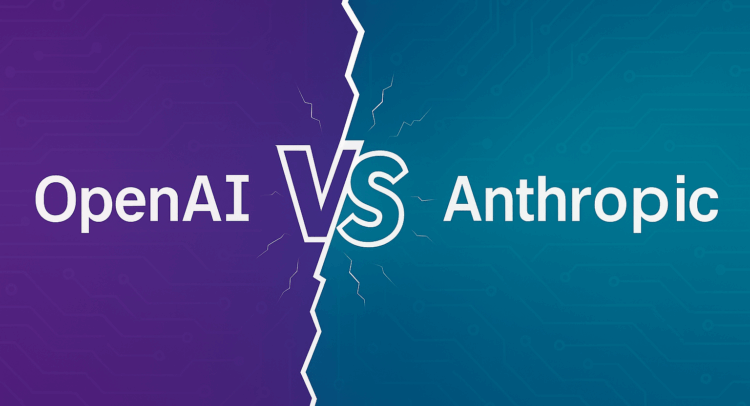OpenAI (PC:OPAIQ) and Anthropic (PC:ANTPQ) are shaping two sides of the same AI market. Both companies design large language models that power chatbots and automation tools. Yet they earn money in very different ways. OpenAI, backed by Microsoft (MSFT), focuses on the broad consumer market through ChatGPT. Anthropic, supported by Amazon (AMZN) and Alphabet (GOOGL) (GOOG), is building its business around corporate clients.
Elevate Your Investing Strategy:
- Take advantage of TipRanks Premium at 50% off! Unlock powerful investing tools, advanced data, and expert analyst insights to help you invest with confidence.
OpenAI’s reach is massive. The company claims ChatGPT now has more than 800 million weekly users. Its annual revenue run rate is about $13 billion, and roughly 30% comes from businesses. The rest comes from consumer plans that range from free to $200 a month. However, such subscriptions do not cover the high cost of running its AI systems. The company may look to advertising in the future, but no clear model exists yet.
Anthropic’s strategy is narrower but steadier. About 80% of its revenue comes from companies that use its Claude AI system for tasks such as coding, billing, and legal drafting. Anthropic said it now serves around 300,000 business customers. Its annual revenue run rate is near $7 billion and could reach $9 billion by year-end. According to Menlo Ventures, which invested in Anthropic, the company holds a 42% share of the coding AI market, compared with 21% for OpenAI.
Corporate Focus and Cloud Ties
Anthropic’s advantage lies in its focus on enterprise use. Microsoft even added Anthropic’s Claude model to its Copilot software suite despite its close link to OpenAI. The move highlights the demand from companies that value reliable and safe AI tools for work. In this space, Anthropic’s more conservative image helps it win customers who prefer practical solutions.
Both firms rely heavily on major cloud providers to run their models. OpenAI has signed large deals worth over $1 trillion to secure chips and computing capacity from Nvidia (NVDA), Advanced Micro Devices (AMD), Broadcom (AVGO), Oracle (ORCL), and Alphabet’s Google. Recently, Anthropic reached a deal with Google Cloud to access one million of Google’s Tensor Processing Unit chips. The deal is worth tens of billions of dollars and deepens a partnership that began when Google invested more than $3 billion in Anthropic.
Anthropic also maintains strong ties with Amazon. The e-commerce and cloud giant has invested about $8 billion in the startup and is building a 2.2-gigawatt data center cluster in Indiana to help train its AI models. Anthropic uses a mix of chips from Amazon, Nvidia, and Google to stay flexible on cost and speed. This mix gives the company a more balanced approach than relying on one supplier.
Different Strategies, Different Strengths
OpenAI and Anthropic are taking opposite routes to reach the same goal: turning AI into a sustainable business. OpenAI’s plan depends on scale. The company targets the mass market with ChatGPT and aims to make money from subscriptions and, later, advertising. That strategy gives it unmatched visibility but uncertain profits. Most users rely on the free version, and it remains unclear how ads would fit into a chatbot experience without hurting user trust.
Anthropic’s model, on the other hand, focuses on depth rather than reach. The company builds tools designed for companies, not individual users. Most of its income comes from businesses that pay for reliable, work-specific AI systems. That focus allows Anthropic to grow with fewer users while earning more per customer. It also gives the company a clearer path to stable cash flow as firms find measurable savings from automation.
In simple terms, OpenAI is chasing volume while Anthropic is chasing value. OpenAI’s broad reach could eventually pay off if it finds a strong way to monetize its audience. Yet Anthropic’s focus on enterprise demand appears easier to sustain in the near-term, since companies are already paying for AI tools that help reduce costs and improve productivity.
By using TipRanks’ Comparison Tool, we’ve lined up the notable AI firms on Wall Street mentioned in the piece. This is a helpful tool to gain a broader perspective on each stock and the AI industry as a whole.
First Appeared on
Source link













